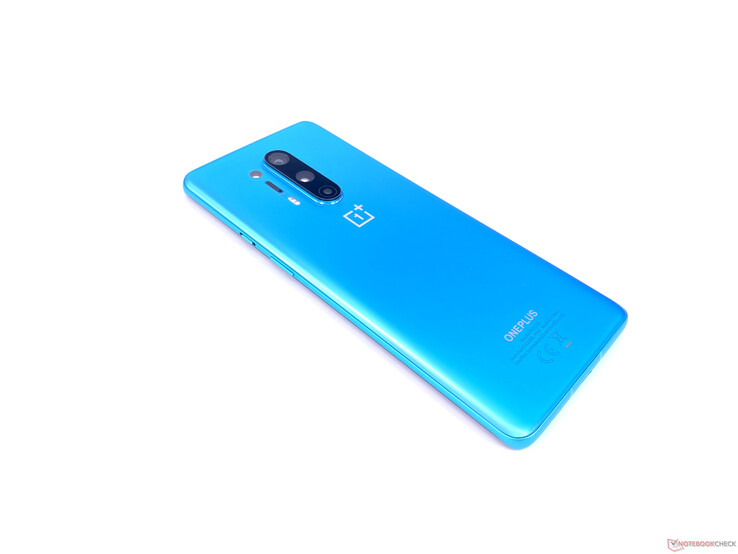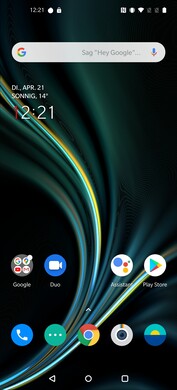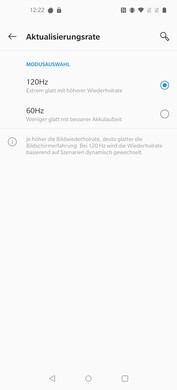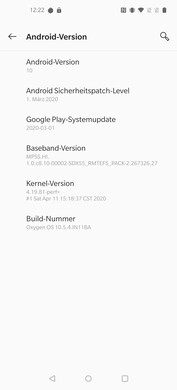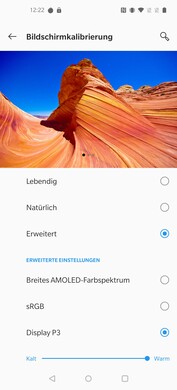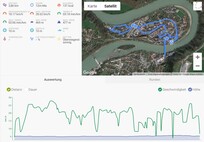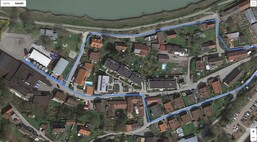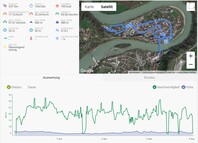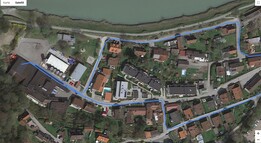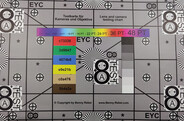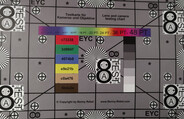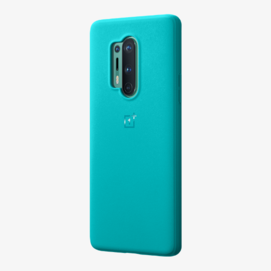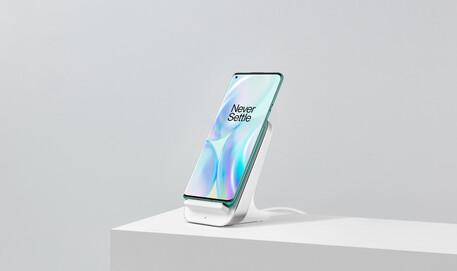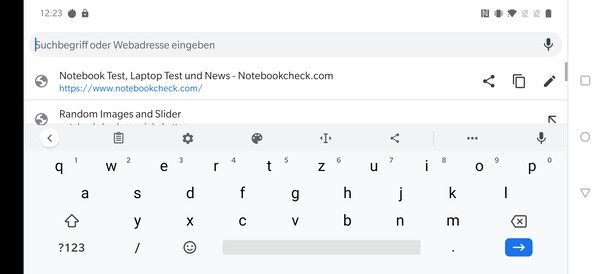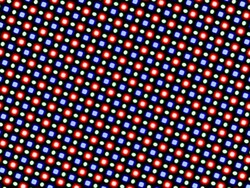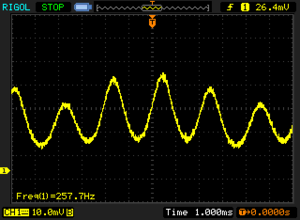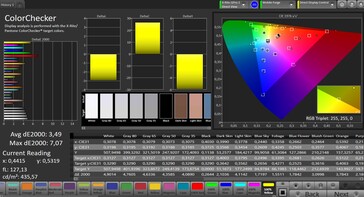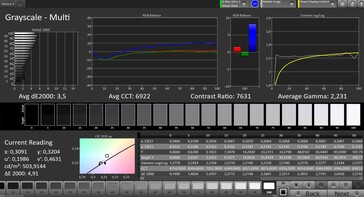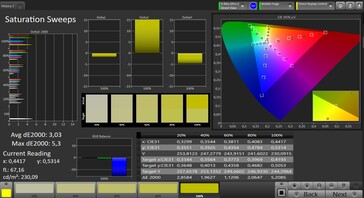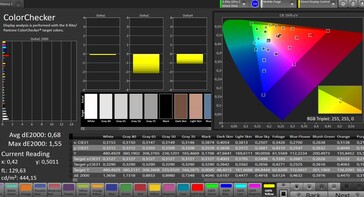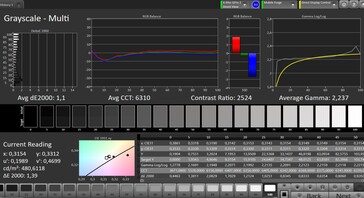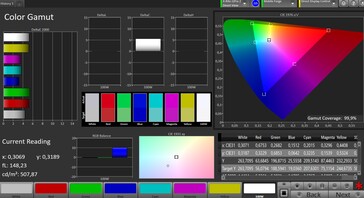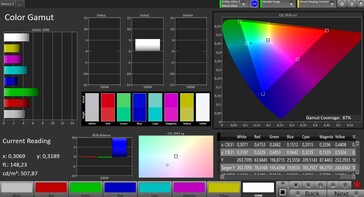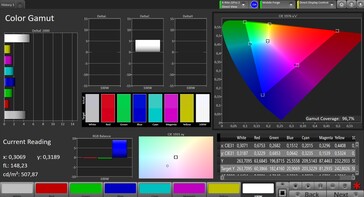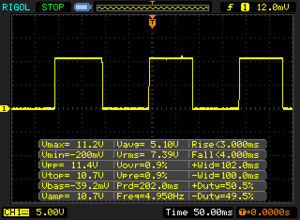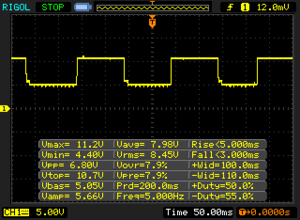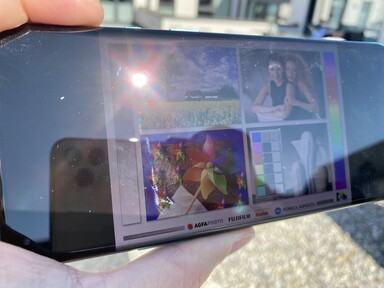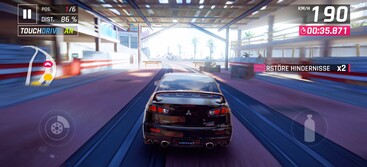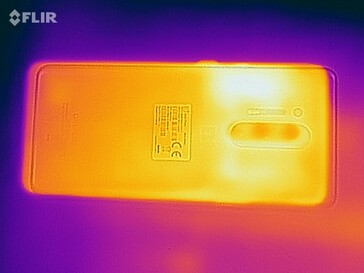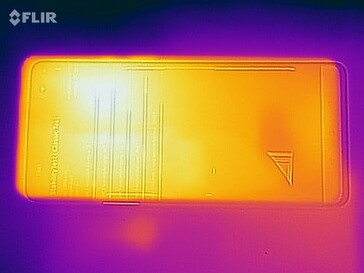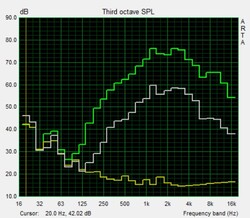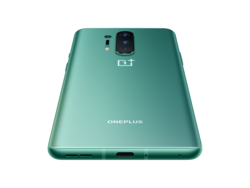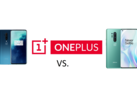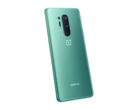OnePlus 8 Pro Smartphone Review: Now also charges wirelessly
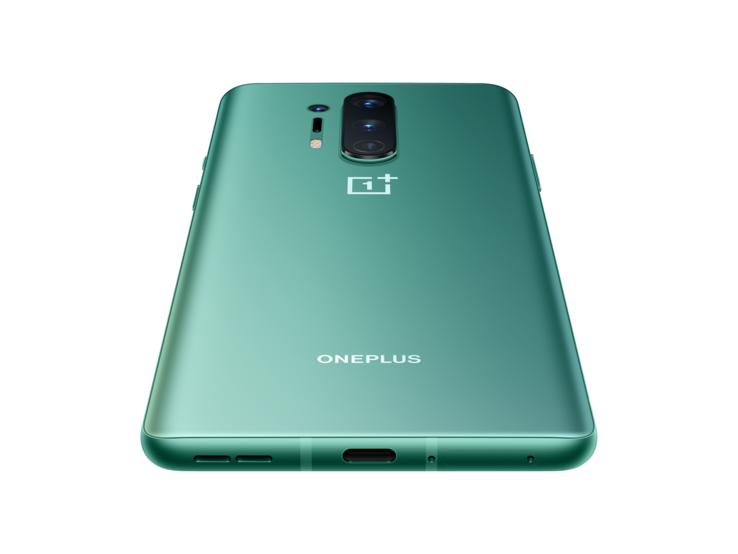
OnePlus has been around for six years, and fans of the Chinese manufacturer have been waiting for six years to be able to charge their smartphones wirelessly. In 2020 this dream has finally come true, as the new OnePlus 8 Pro supports wireless charging. So far, OnePlus has always believed that technology is simply not fast enough for it. Perhaps, it was also because the manufacturer has always been considered a flagship killer but wanted to balance releasing great smartphones at affordable prices; you have to cut costs somewhere when pursuing this strategy.
But those days are also over, as the OnePlus 8 Pro makes a decent price jump from the OnePlus 7 Pro. The most expensive model scratches the US$1,000 mark, but that could still be cheap for the hardware that is on offer. With OnePlus including a 120 Hz display, up to 12 GB RAM and 5G connectivity, we shall look closely at what else the OnePlus 8 Pro has to offer.
Comparison devices
Rating | Date | Model | Weight | Drive | Size | Resolution | Price |
|---|---|---|---|---|---|---|---|
| 88.5 % v7 (old) | 04 / 2020 | OnePlus 8 Pro SD 865, Adreno 650 | 199 g | 256 GB UFS 3.0 Flash | 6.78" | 3168x1440 | |
| 87.7 % v7 (old) | 04 / 2020 | Samsung Galaxy S20+ Exynos 990, Mali-G77 MP11 | 188 g | 128 GB UFS 3.0 Flash | 6.70" | 3200x1440 | |
| 88.2 % v7 (old) | 04 / 2020 | Xiaomi Mi 10 Pro SD 865, Adreno 650 | 208 g | 256 GB UFS 3.0 Flash | 6.67" | 2340x1080 | |
| 87.1 % v7 (old) | 09 / 2019 | Apple iPhone 11 Pro Max A13 Bionic, A13 Bionic GPU | 226 g | 64 GB SSD | 6.50" | 2688x1242 | |
| 86.9 % v7 (old) | 11 / 2019 | OnePlus 7T Pro SD 855+, Adreno 640 | 206 g | 256 GB UFS 3.0 Flash | 6.67" | 3120x1440 | |
| 89.4 % v7 (old) | 04 / 2020 | Huawei P40 Pro Kirin 990 5G, Mali-G76 MP16 | 209 g | 256 GB UFS 3.0 Flash | 6.58" | 2640x1200 |
Case - A very high-quality chassis
OnePlus covers the back of the OnePlus 8 Pro in glass, which it has surrounded with a metal frame. The company has offered bold colours for its latest flagship this time, with Glacial Green being a shimmering colour between turquoise and green. Meanwhile, Ultramarine Blue is an intense blue. If you like your smartphones more understated, then Onyx Black is the more classic colour of the three. The black version has a glossy finish though, whereas the blue and turquoise versions have a matte texture. We received a Glacial Green version of the OnePlus 8 Pro from OnePlus to review, the matte finish of which we found to be very refined. Whoever hopes for complete resistance against fingerprints will be left disappointed, though.
The glass of the display is drawn far over the corners, but the transitions between it and the metal frame are precise and cannot be felt with our fingers. The edges are slightly rougher at the top of the screen, but overall the smartphone feels premium and sits comfortably in our hands.
For the first time in its history, OnePlus has brought itself to IP certify a smartphone. The OnePlus 8 Pro is rated for IP68, the average certification for flagship smartphones. OnePlus has always said that its devices are waterproof, but now there is an official certification based on industry standards.
Connectivity - a lot, but no eSIM
OnePlus has upped its prices again. But you should also note that all smartphone manufacturers have become significantly more expensive with their high-end smartphones now. Nevertheless, the days of OnePlus smartphones being bargains are probably over.
OnePlus offers the following two variants in Central Europe. However, the company provides different combinations in other regions like the UK and US.
- Onyx Black - 8 GB RAM / 128 GB storage: 899 Euros (~$969)
- Glacial Green or Ultramarine Blue - 12 GB RAM / 256 GB storage: 999 Euros (~$1,077)
The Huawei P40 Pro is therefore on par in terms of price, but the iPhone 11 Pro Max is again a good deal more expensive than the OnePlus 8 Pro.
Our test variant is equipped with 12 GB of fast LPDDR5 RAM and 256 GB of UFS 3.0 flash storage. OnePlus is almost unrivalled here, as far as the RAM is concerned at least. Competitors rarely offer as much RAM as OnePlus, but it is a different question of whether you can really use it all.
NFC is on board of course, but there are also numerous sensors like an RGB sensor that can change the colour temperature of the display in changing ambient light. Apple calls this technology True Tone, for reference.
Data can be transferred via USB-C 3.1 Gen1, although OnePlus includes a USB 2.0 Type-C cable in the box. You must use the same port for headphones though, as OnePlus does not include an analogue headphone jack.
The dual SIM version supports two SIM cards; there is no eSIM. A microSD card reader is not present, either.
Software - Modern OxygenOS
The OnePlus software interface OxygenOS appeals due to its clear structure, in our opinion. Running Android 10 out of the box, from experience OnePlus provides two years' worth of OS upgrades, followed by a third year of security updates. The company issues these updates regularly and promptly when significant problems are identified, too. Hence, the OnePlus 8 Pro should receive at least Android 12 and security patch updates until 2023.
OxygenOS has also learned a few new tricks. The popular dark mode, for example, is now available system-wide and for apps that do not officially support it. Likewise, videos from some streaming providers can be automatically scaled up to 120 Hz.
Overall, OnePlus offers a relatively clean OS out of the box. Our review unit only has four third-party apps preinstalled, of which some can be uninstalled.
Communication & GPS - Very accurate
From this generation onwards, OnePlus will only build smartphones that support 5G. The current OnePlus phone only supports Sub6, with the faster mmWave out of range for the device. Currently, the dual-SIM variant of the OnePlus 8 Pro will disable its second SIM card if you are using a 5G SIM. OnePlus has promised to submit an update so that a 5G SIM and a 4G SIM can also be used simultaneously, though. The reception over 4G is very good overall. In buildings, for example, we encountered no problems even in an urban environment. The smartphone supports numerous 4G frequencies too, so you should also be able to use an LTE network abroad should you wish to do so.
In terms of Wi-Fi connectivity, the OnePlus 8 Pro supports Wi-Fi 6 with a 2x2 MIMO antenna. The OnePlus 8 Pro does not support VHT160 though, meaning that it cannot take full advantage of the potential of Wi-Fi 6. This also means that the Huawei P40 Pro has a significant speed advantage here. However, if you do not have a gigabit internet line, then you should hardly notice the difference between the two devices when browsing the web. We conducted our Wi-Fi tests with a Netgear Nighthawk AX12 router, for reference.
Our review unit maintains decent signal strength both when close to our router and at a distance of around 10 metres and three walls from it. Web pages load quickly regardless and you only have to wait a little additional time for pictures to appear.
| Networking | |
| iperf3 transmit AX12 | |
| Huawei P40 Pro | |
| OnePlus 8 Pro | |
| Samsung Galaxy S20+ | |
| Xiaomi Mi 10 Pro | |
| Apple iPhone 11 Pro Max | |
| OnePlus 7T Pro | |
| iperf3 receive AX12 | |
| Xiaomi Mi 10 Pro | |
| Samsung Galaxy S20+ | |
| OnePlus 8 Pro | |
| Huawei P40 Pro | |
| Apple iPhone 11 Pro Max | |
| OnePlus 7T Pro | |
Outdoors, the OnePlus 8 Pro finds a satellite location almost immediately and also precisely to an accuracy of three metres.
After our practical test, during which we compared its location accuracy to a Garmin Edge 520 over a 4 km bike ride, we can say that the OnePlus 8 Pro is a precise navigator. There are minor problems like when making tight turns, but our review unit recorded our route precisely other than that.
Telephone Functions & Call Quality - Room for improvement
In the end, OnePlus' phone app corresponds to the standard Google app, with OnePlus having adapted the design slightly. Searching by voice input is a little more complicated to achieve than it is on Google's app, for example. Otherwise, the stock phone app has the same categories, like call list, contacts and favourites as the Google app does, as well as a button to open the keypad. The OnePlus 8 Pro supports contemporary technologies like VoLTE and VoWiFi, too.
The voice quality of our review unit is okay, with the other party sounding quite loud over the built-in earpiece. However, the OnePlus 8 Pro cannot eliminate all background noise, and we noticed a slight roar during conversations too. The microphone transmits our voice quite well, though, and we found that it eliminated background noise satisfactorily. We also found that other parties sounded better over the loudspeaker than they did over the earpiece, but background noise persists. Overall, while the OnePlus 8 Pro is good enough from which to make and receive phone calls, the Huawei P40 series offers better call quality in our opinion.
Cameras - High resolution or bright
High-resolution main cameras are the latest craze in high-end smartphones, even if the extremely high resolutions are rarely used in full. Typically, modern smartphone camera sensors combine several pixels to achieve a higher light output, a path that the OnePlus 8 Pro follows with its 48 MP primary rear-facing sensor. The IMX689 combines four pixels into one, also known as pixel-binning, resulting in a 12 MP output with higher light sensitivity than a 48 MP shot would have. OnePlus complements the primary sensor with a 48 MP ultra-wide-angle lens and an 8 MP optically stabilised telephoto lens. OIS should prevent blurring when taking close-up pictures, for reference.
In good lighting conditions, the OnePlus 8 Pro takes sharp photos that shine with many details, although colours could perhaps be displayed a little more vividly. That is probably a matter of taste, though. Under low light, however, the standard photo mode struggles to expose objects that well and pales in comparison to the capabilities of other high-end smartphones. Generally, these take even sharper photos than the OnePlus 8 Pro can, with improved contrast to boot. The special night mode delivers good results here though, but you must activate it manually.
Thanks to the ultra-wide-angle and telephoto lenses, the OnePlus 8 Pro effectively supports optical zoom from 0.6x to 3x, after which it supports up to 30x digital zoom. The camera system of the OnePlus 8 Pro is therefore quite flexible, but it cannot match the zoom performance of the Huawei P40 Pro and its periscope lens, for example. With a super macro mode, you can photograph objects that are only 3 cm from the lens, which is a nice touch.
Then we come to the OnePlus 8 Pro's fourth rear-facing camera, a colour filter sensor. In short, this allows the device to produce some unusual effects, examples of which we have included below. Overall, the photochromic mode, the only one that actually switches to the colour filter sensor, produces some curious results, in our opinion.
Videos can be recorded in up to 4K and 60 FPS and in 21:9 on request. You may have seen this referred to as a cinema aspect ratio elsewhere. OnePlus enables many support functions at 30 FPS but not all are available at higher frame rates. The image quality is decent overall, with the exposure sensor responding well to changing lighting conditions. In our experience, the OnePlus 8 Pro graduates exposure levels finely graded, but we can pick out the edges of moving objects. The autofocus does a good job too, but every now and then you can see the camera making slight adjustments until it finds the correct setting.
The OnePlus 8 Pro also has a 16 MP front-facing camera. In short, it takes well-lit photos, but it could offer sharper details in our opinion.
The primary camera also has to prove itself in the laboratory under controlled lighting conditions. We conducted our tests once with full studio lighting and once at 1 lux. Even in abysmal light, images remain visible, but details are noticeably worse than they in good lighting. We liked the image sharpness in full lighting, while the contrast of the image also convinced us. Colours tend to be overexposed, though.
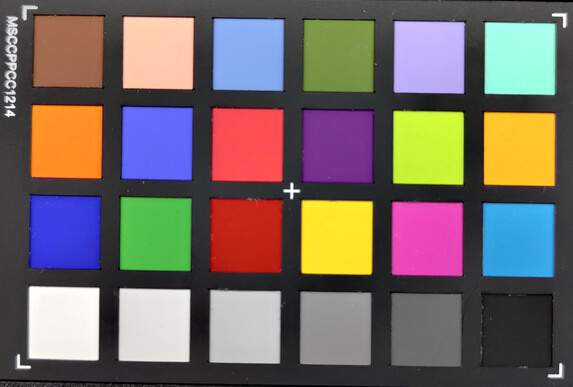
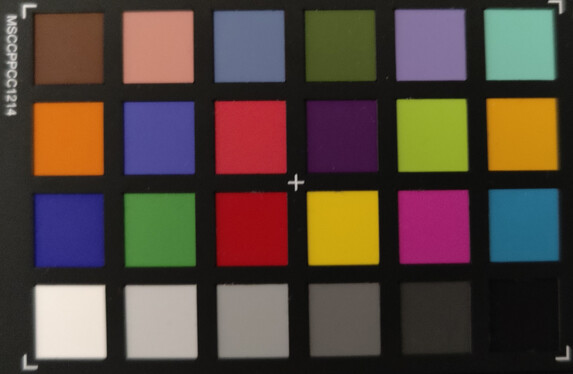
Accessories & Warranty - No USB 3.1 cable included
You have to hand it to OnePlus; the company knows how to make beautiful accessories. Its red and white USB cable continues to look stylish, in our opinion. It is just a shame that OnePlus has included a USB 2.0 cable with the OnePlus 8 Pro. The company has included a silicone case in the box, too. Not only is it transparent like many silicone cases that many OEMs include with their smartphones, but it also has OnePlus' "Never Settle" motto printed down the side.
The wireless charger charges the smartphone in a standing position, is also stylishly designed and it costs 69.99 Euros (~$75). OnePlus again offers special covers, such as rough sandstone, for just 25 Euros (~$27) each. OnePlus will surely offer accessories too, as it is currently filling out its online shop.
The OnePlus 8 Pro comes with a 24-month manufacturer's warranty. OnePlus explicitly excludes liquid damage, though. Please see our Guarantees, Return Policies and Warranties FAQ for country-specific information.
Input Devices & Operation - Very smooth navigation
The touchscreen not only benefits from the display's 120 Hz refresh rate, which helps create a perceived sense of speed, but also from a 240 Hz sampling rate. In short, the latter means that the OnePlus 8 Pro checks the display 240 times a second for touches. Overall, our OnePlus 8 Pro review unit can be operated accordingly fine and precisely.
The OnePlus 8 Pro has an in-display fingerprint scanner, like its predecessors. However, you must double-tap the display for the fingerprint sensor to react. If you do that, then the sensor usually recognises registered fingers quickly and accurately. The OnePlus 8 Pro unlocks instantly when it recognises a fingerprint, too.
OnePlus has also installed a new vibration motor in the OnePlus 8 Pro. In short, the haptic feedback that it delivers almost feels as good as Apple's taptic engine.
If you want to unlock the OnePlus 8 Pro with your face, then you can do so with the front-facing camera. It also works in the dark, but the device increases screen brightness to ensure that it captures your face. There is no infrared camera for this purpose, though. Activating the power button enables facial recognition, which works well overall even if it needs a moment from time to time in the dark.
Display - Bright and very well calibrated
When it comes to the screen, OnePlus has included everything that high-end smartphones should have in 2020. Namely, a 120 Hz refresh rate, high maximum brightness and HDR10+ support. Starting with the brightness, which OnePlus claims peaks at 1,300 cd/m². We could not replicate these values in our laboratory tests, but the OnePlus 8 Pro still beat most other smartphones on average. Only the iPhone 11 Pro Max is brighter than the OnePlus 8 Pro. In strong sunlight, the OnePlus 8 Pro may even exceed the peak 779 cd/m² value that we determined during our tests.
The OnePlus 8 Pro also has a high-resolution panel. Specifically, the display operates natively at 3168x1440 pixels, but that is not enough to display 4K content natively. However, few smartphones currently offer this; 1440p is sharp enough in our opinion for smartphone screens.
| |||||||||||||||||||||||||
Brightness Distribution: 94 %
Center on Battery: 796 cd/m²
Contrast: ∞:1 (Black: 0 cd/m²)
ΔE ColorChecker Calman: 0.68 | ∀{0.5-29.43 Ø4.79}
ΔE Greyscale Calman: 1.1 | ∀{0.09-98 Ø5}
99.9% sRGB (Calman 2D)
Gamma: 2.237
CCT: 6310 K
| OnePlus 8 Pro AMOLED, 3168x1440, 6.8" | Samsung Galaxy S20+ AMOLED, 3200x1440, 6.7" | Xiaomi Mi 10 Pro Super AMOLED, 2340x1080, 6.7" | Apple iPhone 11 Pro Max OLED, 2688x1242, 6.5" | OnePlus 7T Pro AMOLED, 3120x1440, 6.7" | Huawei P40 Pro OLED, 2640x1200, 6.6" | |
|---|---|---|---|---|---|---|
| Screen | -87% | -13% | -49% | -133% | -38% | |
| Brightness middle (cd/m²) | 796 | 740 -7% | 753 -5% | 790 -1% | 606 -24% | 584 -27% |
| Brightness (cd/m²) | 779 | 747 -4% | 762 -2% | 790 1% | 611 -22% | 576 -26% |
| Brightness Distribution (%) | 94 | 94 0% | 96 2% | 97 3% | 95 1% | 95 1% |
| Black Level * (cd/m²) | ||||||
| Colorchecker dE 2000 * | 0.68 | 2.6 -282% | 0.9 -32% | 1.4 -106% | 3.46 -409% | 1.1 -62% |
| Colorchecker dE 2000 max. * | 1.55 | 4.57 -195% | 1.6 -3% | 3.4 -119% | 5.64 -264% | 2.3 -48% |
| Greyscale dE 2000 * | 1.1 | 1.5 -36% | 1.5 -36% | 1.9 -73% | 2 -82% | 1.8 -64% |
| Gamma | 2.237 98% | 2.269 97% | 2.24 98% | 2.23 99% | 2.258 97% | 2.16 102% |
| CCT | 6310 103% | 6284 103% | 6415 101% | 6466 101% | 6779 96% | 6355 102% |
* ... smaller is better
Screen Flickering / PWM (Pulse-Width Modulation)
| Screen flickering / PWM detected | 258 Hz | ||
The display backlight flickers at 258 Hz (worst case, e.g., utilizing PWM) . The frequency of 258 Hz is relatively high, so most users sensitive to PWM should not notice any flickering. However, there are reports that some users are still sensitive to PWM at 500 Hz and above, so be aware. In comparison: 53 % of all tested devices do not use PWM to dim the display. If PWM was detected, an average of 8167 (minimum: 5 - maximum: 343500) Hz was measured. | |||
OnePlus installs an AMOLED panel on the OnePlus 8 Pro, so there is no need to worry about contrast. Since the panel can switch off pixels individually, then the OnePlus 8 Pro can create absolute blacks. As a result, the OnePlus 8 Pro theoretically has an infinite contrast ratio. Colours look vivid, while blacks look deep. OnePlus includes two display presets on the OnePlus 8 Pro too, which it calls Natural and Vivid. The names are well-chosen, because vivid enables bright colours, while the natural mode is more representative of real-world colours.
CalMAN software and our spectrophotometer determined that the OnePlus 8 Pro has a well-calibrated display and one that provides the lowest colour deviations of our test field. If colour accuracy is crucial for you, then you should choose the Natural profile. Differences are still acceptable with the display set to vivid mode.
However, the AMOLED screen has the disadvantage that it also uses pulse-width modulation (PWM) to regulate display brightness. Some people may perceive this as an unpleasant flickering. OnePlus includes DC dimming technology as an experimental option to alleviate this effect, though.
Display Response Times
| ↔ Response Time Black to White | ||
|---|---|---|
| 7 ms ... rise ↗ and fall ↘ combined | ↗ 3 ms rise | |
| ↘ 4 ms fall | ||
| The screen shows very fast response rates in our tests and should be very well suited for fast-paced gaming. In comparison, all tested devices range from 0.1 (minimum) to 240 (maximum) ms. » 19 % of all devices are better. This means that the measured response time is better than the average of all tested devices (20.3 ms). | ||
| ↔ Response Time 50% Grey to 80% Grey | ||
| 8 ms ... rise ↗ and fall ↘ combined | ↗ 5 ms rise | |
| ↘ 3 ms fall | ||
| The screen shows fast response rates in our tests and should be suited for gaming. In comparison, all tested devices range from 0.165 (minimum) to 636 (maximum) ms. » 19 % of all devices are better. This means that the measured response time is better than the average of all tested devices (31.7 ms). | ||
Performance - What you would expect from a high-end smartphone
The Snapdragon 865 is Qualcomm's latest and fastest high-end SoC. It offers eight cores split across three clusters: a super-fast prime core, three fast performance cores and four energy-saving processor cores for less complicated work.
The OnePlus 8 Pro is about 10% faster than its predecessor, which OnePlus equipped with the Snapdragon 855+. In short, the OnePlus 8 Pro will be one of the fastest smartphones available in mid-2020. The graphics unit also offers 10-20% more performance than its predecessor, making it a powerful GPU indeed.
| PCMark for Android | |
| Work performance score (sort by value) | |
| OnePlus 8 Pro | |
| Samsung Galaxy S20+ | |
| Xiaomi Mi 10 Pro | |
| OnePlus 7T Pro | |
| Huawei P40 Pro | |
| Average Qualcomm Snapdragon 865 (10990 - 19989, n=22) | |
| Work 2.0 performance score (sort by value) | |
| OnePlus 8 Pro | |
| Samsung Galaxy S20+ | |
| Xiaomi Mi 10 Pro | |
| OnePlus 7T Pro | |
| Huawei P40 Pro | |
| Average Qualcomm Snapdragon 865 (9202 - 15299, n=23) | |
| AnTuTu v8 - Total Score (sort by value) | |
| OnePlus 8 Pro | |
| Samsung Galaxy S20+ | |
| Xiaomi Mi 10 Pro | |
| Apple iPhone 11 Pro Max | |
| OnePlus 7T Pro | |
| Huawei P40 Pro | |
| Average Qualcomm Snapdragon 865 (527301 - 631025, n=24) | |
The OnePlus 8 Pro also does well in browser-rendering benchmarks. Our review unit clearly surpasses its predecessor, for example, and performs well enough to put it in the medium to high rankings among strong competitors.
Generally, websites loaded quickly in everyday life. HTML 5 content proved no problem for the OnePlus 8 Pro, either.
| Jetstream 2 - 2.0 Total Score | |
| Average of class Smartphone (23.8 - 387, n=154, last 2 years) | |
| Apple iPhone 11 Pro Max (Safari Mobile 13.1) | |
| Huawei P40 Pro (Huawei Browser 10.1) | |
| Xiaomi Mi 10 Pro (Chrome 81) | |
| Average Qualcomm Snapdragon 865 (45.2 - 77, n=20) | |
| OnePlus 8 Pro (Chrome 80) | |
| OnePlus 7T Pro (Chrome 78) | |
| Samsung Galaxy S20+ (Chrome 80) | |
| JetStream 1.1 - Total Score | |
| Apple iPhone 11 Pro Max (Safari Mobile 13.1) | |
| Huawei P40 Pro (Huawei Browser 10.1) | |
| OnePlus 7T Pro (Chrome 78) | |
| Xiaomi Mi 10 Pro (Chrome 81) | |
| OnePlus 8 Pro (Chrome 80) | |
| Average Qualcomm Snapdragon 865 (74.2 - 145.1, n=21) | |
| Samsung Galaxy S20+ (Chrome 80) | |
| Speedometer 2.0 - Result 2.0 | |
| Average of class Smartphone (15.2 - 643, n=131, last 2 years) | |
| Apple iPhone 11 Pro Max (Safari Mobile 13.1) | |
| Huawei P40 Pro (Huawei Browser 10.1) | |
| Xiaomi Mi 10 Pro (Chrome 81) | |
| OnePlus 8 Pro (Chome 80) | |
| OnePlus 7T Pro (Chome 78) | |
| Average Qualcomm Snapdragon 865 (30.6 - 74.5, n=19) | |
| Samsung Galaxy S20+ (Chome 80) | |
| WebXPRT 3 - Overall | |
| Apple iPhone 11 Pro Max (Safari Mobile 13.1) | |
| Average of class Smartphone (38 - 380, n=41, last 2 years) | |
| Average Qualcomm Snapdragon 865 (97 - 127, n=23) | |
| OnePlus 8 Pro (Chrome 80) | |
| Xiaomi Mi 10 Pro (Chrome 81) | |
| OnePlus 7T Pro (Chrome 78) | |
| Samsung Galaxy S20+ (Chrome 80) | |
| Huawei P40 Pro | |
| Octane V2 - Total Score | |
| Apple iPhone 11 Pro Max (Safari Mobile 13.1) | |
| Average of class Smartphone (2228 - 121337, n=200, last 2 years) | |
| OnePlus 7T Pro (Chrome 78) | |
| Huawei P40 Pro (Huawei Browser 10.1) | |
| OnePlus 8 Pro (Chrome 80) | |
| Xiaomi Mi 10 Pro (Chrome 81) | |
| Average Qualcomm Snapdragon 865 (14606 - 31224, n=23) | |
| Samsung Galaxy S20+ (Chrome 80) | |
| Mozilla Kraken 1.1 - Total | |
| Samsung Galaxy S20+ (Chrome 80) | |
| OnePlus 7T Pro (Chrome 78) | |
| Average Qualcomm Snapdragon 865 (1623 - 2911, n=24) | |
| Xiaomi Mi 10 Pro (Chrome 81) | |
| OnePlus 8 Pro (Chrome 80) | |
| Huawei P40 Pro (Huawei Browser 10.1) | |
| Average of class Smartphone (257 - 28190, n=155, last 2 years) | |
| Apple iPhone 11 Pro Max (Safari Mobile 13.1) | |
* ... smaller is better
OnePlus has equipped the OnePlus 8 Pro with UFS 3.0 flash storage, a storage type currently installed in many high-end smartphones. The OnePlus 8 Pro utilises its fast memory much better than its predecessor does, but that only puts it at eye level with other modern flagship smartphones.
| OnePlus 8 Pro | Samsung Galaxy S20+ | Xiaomi Mi 10 Pro | OnePlus 7T Pro | Huawei P40 Pro | Average 256 GB UFS 3.0 Flash | Average of class Smartphone | |
|---|---|---|---|---|---|---|---|
| AndroBench 3-5 | 2% | 17% | -40% | 3% | -8% | 74% | |
| Sequential Read 256KB (MB/s) | 1627 | 1603 -1% | 1739 7% | 1489 -8% | 1775 9% | 1547 ? -5% | 2207 ? 36% |
| Sequential Write 256KB (MB/s) | 730 | 694 -5% | 750 3% | 405 -45% | 395.7 -46% | 575 ? -21% | 1822 ? 150% |
| Random Read 4KB (MB/s) | 208.3 | 199.6 -4% | 264.9 27% | 169 -19% | 228.1 10% | 210 ? 1% | 292 ? 40% |
| Random Write 4KB (MB/s) | 197.7 | 229.8 16% | 258.5 31% | 26 -87% | 271.8 37% | 188.5 ? -5% | 339 ? 71% |
| Sequential Read 256KB SDCard (MB/s) | 66.8 ? | 82.3 ? | 70.6 ? | ||||
| Sequential Write 256KB SDCard (MB/s) | 57.6 ? | 68.1 ? | 59.8 ? |
Games - Smooth gaming
We tested the gaming capabilities of the OnePlus 8 Pro with Asphalt 9: Legends and PUBG Mobile, the frame rates of which we measured using GameBench. While both games run smoothly, they cannot benefit from the device's 120 Hz panel. PUBG Mobile tries to run above 60 FPS at high graphics at least, although there were strange fluctuations between 70 FPS and 5 FPS. These looked like stutters to our eyes. In general though, PUBG Mobile runs at around 30 - 40 FPS on high graphics, underlining that the OnePlus 8 Pro is powerful enough for all current games. In short, you should hardly have any problems when gaming with the OnePlus 8 Pro over the next few years thanks to its strong components.
Additionally, the touchscreen and all associated sensors worked precisely during our gaming tests.
Emissions - High temperatures but no throttling
Temperature
The OnePlus 8 Pro gets quite warm under sustained loads, possibly so much so that the device will feel uncomfortable to the touch in summer after a prolonged gaming session. The back of our review unit reached 46.9 °C during our tests, for example, which is hot by any standards. By contrast, the OnePlus 8 Pro gets nowhere near as hot when idling.
During our tests with the OnePlus 7T Pro, we noticed that the system would force-close apps under extreme and prolonged load, indicating that it was overheating. This no longer happens with the OnePlus 8 Pro. Instead, you just get a message that some functions are no longer available because of high temperatures, like the flashlight. Fortunately, the OnePlus 8 Pro does not throttle even under sustained load, which we determined with the GFXBench battery test app.
(-) The maximum temperature on the upper side is 46.7 °C / 116 F, compared to the average of 35.2 °C / 95 F, ranging from 21.9 to 247 °C for the class Smartphone.
(-) The bottom heats up to a maximum of 46.9 °C / 116 F, compared to the average of 34 °C / 93 F
(±) In idle usage, the average temperature for the upper side is 32 °C / 90 F, compared to the device average of 32.9 °C / 91 F.
Speakers
The OnePlus 8 Pro has a hybrid stereo speaker system. Specifically, the device uses a dedicated speaker found on its bottom edge and its earpiece to create a stereo effect. According to our tests, the OnePlus 8 Pro gets slightly louder than its predecessor, with its speakers peaking at 84.4 dB(A). This should be loud enough for the device to fill medium-sized rooms, in our opinion. The OnePlus 8 Pro has decent-sounding speakers too, with our review unit able to reproduce low mids while delivering a balanced sound signature overall. At maximum volume, the speakers over-represent treble, but this is still bearable to our ears. You can always remedy this by slightly lowering the volume, though.
As we mentioned at the start of this review, the OnePlus 8 Pro can also output audio via its USB Type-C port. The same applies to Bluetooth, which the OnePlus 8 Pro supports up to the 5.1. standard. Both methods reproduce sound cleanly, while aptX HD codec support is on hand for streaming over Bluetooth.
OnePlus 8 Pro audio analysis
(+) | speakers can play relatively loud (84.4 dB)
Bass 100 - 315 Hz
(-) | nearly no bass - on average 70.2% lower than median
(+) | bass is linear (0% delta to prev. frequency)
Mids 400 - 2000 Hz
(-) | nearly no mids - on average 70.2% lower than median
(+) | mids are linear (0% delta to prev. frequency)
Highs 2 - 16 kHz
(-) | nearly no highs - on average 70.2% lower than median
(+) | highs are linear (0% delta to prev. frequency)
Overall 100 - 16.000 Hz
(-) | overall sound is not linear (123.4% difference to median)
Compared to same class
» 92% of all tested devices in this class were better, 7% similar, 1% worse
» The best had a delta of 12%, average was 35%, worst was 134%
Compared to all devices tested
» 97% of all tested devices were better, 2% similar, 0% worse
» The best had a delta of 4%, average was 24%, worst was 134%
OnePlus 7T Pro audio analysis
(±) | speaker loudness is average but good (81.4 dB)
Bass 100 - 315 Hz
(-) | nearly no bass - on average 64.7% lower than median
(+) | bass is linear (0% delta to prev. frequency)
Mids 400 - 2000 Hz
(-) | nearly no mids - on average 64.7% lower than median
(+) | mids are linear (0% delta to prev. frequency)
Highs 2 - 16 kHz
(-) | nearly no highs - on average 64.7% lower than median
(+) | highs are linear (0% delta to prev. frequency)
Overall 100 - 16.000 Hz
(-) | overall sound is not linear (120% difference to median)
Compared to same class
» 88% of all tested devices in this class were better, 9% similar, 3% worse
» The best had a delta of 12%, average was 35%, worst was 134%
Compared to all devices tested
» 97% of all tested devices were better, 3% similar, 1% worse
» The best had a delta of 4%, average was 24%, worst was 134%
Power Management - Slightly longer runtimes than its predecessor
Power Consumption
Even though the OnePlus 7T Pro was economic under high load, it proved thirstier than its peers in all other scenarios. The OnePlus 8 Pro showed a similar picture in our tests, although its power consumption values when idling have increased slightly.
| Off / Standby | |
| Idle | |
| Load |
|
Key:
min: | |
| OnePlus 8 Pro 4510 mAh | Samsung Galaxy S20+ 4500 mAh | Xiaomi Mi 10 Pro 4500 mAh | Apple iPhone 11 Pro Max 3969 mAh | OnePlus 7T Pro 4085 mAh | Huawei P40 Pro 4200 mAh | Average Qualcomm Snapdragon 865 | Average of class Smartphone | |
|---|---|---|---|---|---|---|---|---|
| Power Consumption | 20% | 46% | 31% | 6% | 48% | 22% | 24% | |
| Idle Minimum * (Watt) | 2.2 | 1 55% | 0.61 72% | 0.92 58% | 2.1 5% | 0.92 58% | 1.133 ? 48% | 0.856 ? 61% |
| Idle Average * (Watt) | 3.3 | 1.7 48% | 1.19 64% | 2.9 12% | 3 9% | 1.41 57% | 2.23 ? 32% | 1.437 ? 56% |
| Idle Maximum * (Watt) | 3.7 | 2.3 38% | 1.23 67% | 2.94 21% | 3.5 5% | 1.47 60% | 2.45 ? 34% | 1.612 ? 56% |
| Load Average * (Watt) | 5.9 | 5.8 2% | 4.18 29% | 3.65 38% | 5.3 10% | 3.35 43% | 5.26 ? 11% | 7.1 ? -20% |
| Load Maximum * (Watt) | 8.3 | 11.8 -42% | 8.53 -3% | 6.18 26% | 8.3 -0% | 6.37 23% | 9.68 ? -17% | 11.2 ? -35% |
* ... smaller is better
Battery Life
While the OnePlus 8 Pro has higher power consumption than its predecessor, it also has a significantly larger battery than the OnePlus 7T Pro. With a 4,510 mAh cell, OnePlus is now at the current level set by other high-end smartphones. However, the OnePlus 8 Pro only has slightly better battery life than its predecessor, the difference between which you will hardly notice in daily use. That being said, the OnePlus 7T Pro lasted a very long time in our Wi-Fi test, and the OnePlus 8 Pro is no different. A runtime of 15:23 hours puts the OnePlus 8 Pro well beyond its peers, although this only applies with the device set to 60 Hz. Setting the display to 120 Hz shaves about four hours off that runtime, yielding an 11-hour runtime.
We were thrilled again by the super-fast charging technology from OnePlus. WarpCharge 30T fully charges the OnePlus 8 Pro in under 90 minutes and a few minutes of charge time should give you a few hours of moderate use. OnePlus has made the charging itself smarter. In short, the OnePlus 8 Pro learns at what time you usually charge it and only tops itself up shortly before it has learned you will use it again. This takes a little time for the device to work an exact time out, but it should help to extend the life of your device's battery in the long run.
WarpCharge 30 Wireless is new, and OnePlus supplied us with the right charger for our tests. Our review unit charges quickly, with up to 30 W of energy being pumped into the battery. Existing Qi chargers can also be used, but then the OnePlus 8 Pro will only charge at 10 W. Reverse charging via wireless function is possible, too. Incidentally, OnePlus' Wireless Charger has a built-in fan, which can be deactivated. Doing so results in the OnePlus 8 Pro charging silently but also more slowly. The fan noise is neither particularly loud nor at an alarming frequency, though.
| OnePlus 8 Pro 4510 mAh | Samsung Galaxy S20+ 4500 mAh | Xiaomi Mi 10 Pro 4500 mAh | Apple iPhone 11 Pro Max 3969 mAh | OnePlus 7T Pro 4085 mAh | Huawei P40 Pro 4200 mAh | |
|---|---|---|---|---|---|---|
| Battery runtime | -12% | -11% | 23% | -4% | -18% | |
| Reader / Idle (h) | 35.1 | 34 -3% | 35.6 1% | 43.6 24% | 33.6 -4% | 24.6 -30% |
| H.264 (h) | 17.1 | 16.3 -5% | 16.2 -5% | 22.4 31% | 16 -6% | 19 11% |
| WiFi v1.3 (h) | 15.4 | 13.2 -14% | 14.4 -6% | 15.2 -1% | 15.2 -1% | 12.4 -19% |
| Load (h) | 4.9 | 3.6 -27% | 3.3 -33% | 6.8 39% | 4.7 -4% | 3.3 -33% |
Pros
Cons
Verdict - High quality and expensive
The OnePlus 8 Pro is a great smartphone and is still relatively cheap, considering the features that it offers and compared with other modern flagships. Nevertheless, OnePlus has almost reached the US$1,000 mark, making the OnePlus 8 Pro a low-priced high-end smartphone with excellent features rather than an affordable flagship.
This includes the great 120 Hz display, which gets impressively bright and supports HDR10+. OnePlus has calibrated the panel well enough for professional image editors too. Additionally, its 240 Hz sampling rate makes the touchscreen feel incredibly fast.
New features and a new price: The OnePlus 8 Pro offers top technology, but OnePlus' smartphones are no longer cheap.
High performance values, no throttling and no more crashes under sustained load, coupled with usable battery life, fast charging, current software and speedier storage. What more could you want? Well, OnePlus could improve call quality and reduce surface temperatures, which remain rather high.
Overall, however, OnePlus has produced an excellent flagship smartphone that now also fulfils fan requests of IP certification and wireless charging.
OnePlus 8 Pro
- 08/31/2022 v7 (old)
Florian Schmitt




